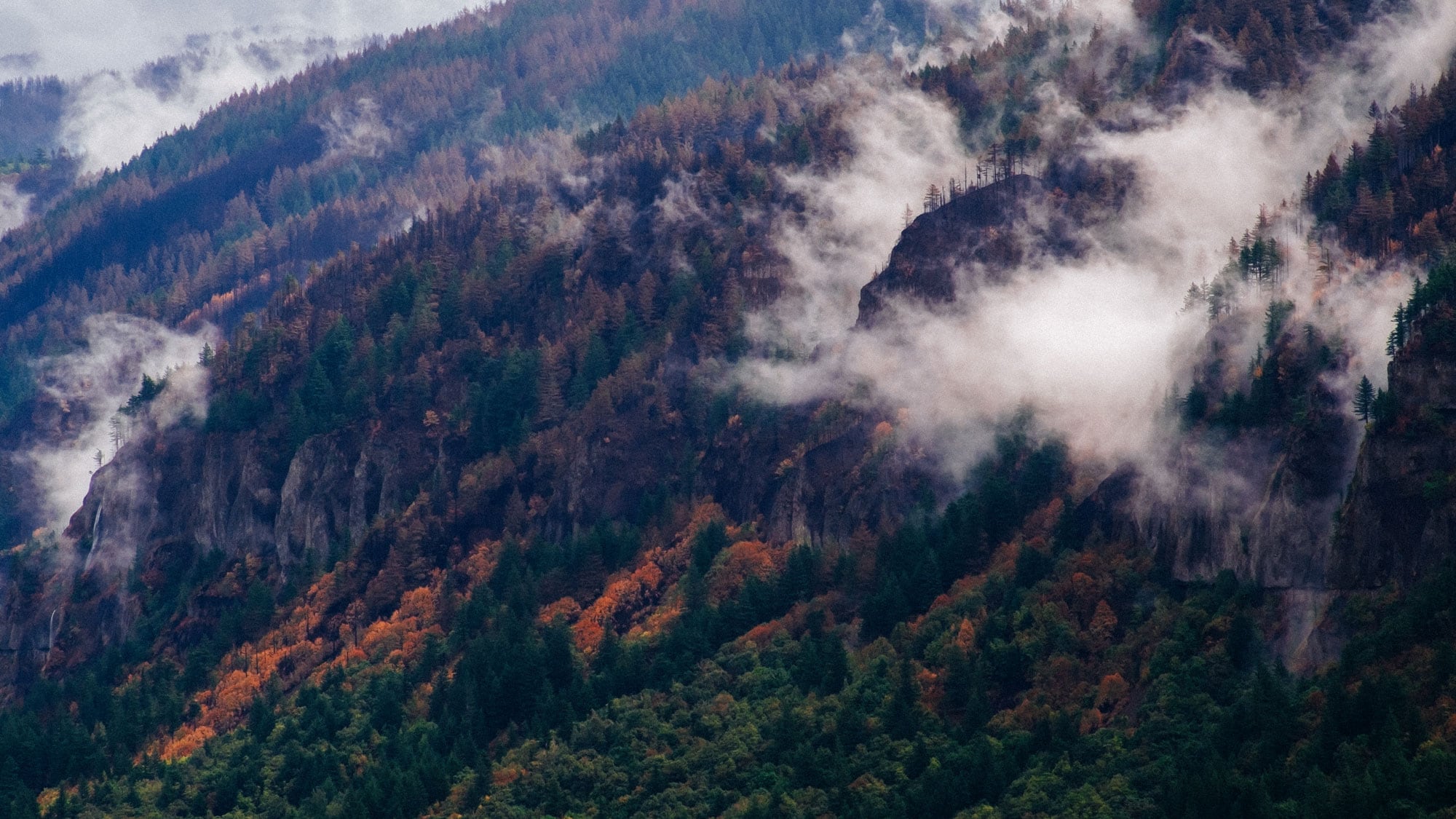In 1902, there was a fire near Eagle Creek. How it started is a matter of debate. Jim Atwell's 1974 history of the Columbia River Gorge presents several conflicting narratives: Either a gang of dirtbag teens was trying to burn out a yellow jacket nest, a hard-working steamboat crew was trying to burn out a yellow jacket nest, or there was a lightning strike.
The cause isn't that important really.
What is important is that wind and dry grasses conspired to spread the fire throughout the east end of the Gorge and across the Columbia River into Washington, where it found dry September weather, irresponsible lumber storage practices, and other small fires. The blaze laid waste to a massive swath of forest across Clark, Cowlitz and Skamania counties.
The complex of fires was christened the Yacolt Burn, though it barely missed the city of Yacolt. It killed 65 people, cleared a whopping 500,000 acres of forest, destroyed $13 million worth of property and covered Portland in a half-inch of ash.
The transformation in firefighting methods after the Yacolt Burn was swift.
"After that, the general regime was 'fight all fire very, very aggressively,'" says Andy Matarrese, a reporter for The Columbian who previously fought wildfires for three seasons. "They had something called the '10 am rule,' and the idea was that every fire call firefighters would have under control by 10 am the next day."
It's been 115 years since the Yacolt Burn, and the area affected is now a rainforest like every other rainforest in the Pacific Northwest, with only minor signs there was a catastrophic fire there in the relatively recent past. It regrew from the ashes.
This is what forests do.
A complete absence of fire promotes "thick, nasty," overgrown forest, Matarrese says, one that stops growing in the way its supposed to.
Even the dudes holding the hoses know it, he adds.
"The joke we tell is, late in the fire season, on the ground, basic-level firefighters get sort of an existential crisis because you know a lot of the work you're doing isn't necessarily good for the forest," Matarrese says. "Most fire is pretty good for a forest from a nature-slash-ecology perspective."


This brings context to the recent string of wildfires along the Columbia River Gorge, popularly known as the Eagle Creek Fire. Three weeks ago, Washington enacted its long-simmering revenge for Yacolt when a Vancouver teen threw a firecracker down a ravine and started a massive blaze that devoured the Columbia Gorge. The fire blanketed the entire Pacific Northwest in smoke, sent a heap of ash pouring into Portland, and destroyed 30,000-plus acres of forest along the Gorge, one of the scenic jewels of the beautiful state of Oregon.
Fire is a bummer. It's dangerous; it burns people's homes, threatens civic landmarks and razes elements of the natural world some of us have lived with all our lives. It sends animals scattering to find food and shelter.
But it's important to observe that fire—even fire caused by humans—is a part of nature.
Flowers wilt, rivers flood, volcanoes blow up, forests burn. It's essential to their very existence, the top of the stroke in the bicycle pedal of their lives, a fundamental fact of their nature, inevitable and beneficial.

Meg Krawchuk, assistant professor at the Oregon State University College of Forestry, says fire is a necessity in forest ecosystems.
"We're actually in a bit of a fire deficit when we think about this over the longer historical period," she says. "You certainly don't want too much of this, and we're not sure how the size of the Eagle Creek Fire plays into the natural patterning we might expect to see over a longer historical period of time, but the very being of fire in that ecosystem is very likely a good thing."
Life will return to burned areas in short order. Fungi are already crawling around in the ashes of the fire, laying the foundation for soil that will support the plants that will constitute the early seral stage of the forest's regrowth—a time when heat from the fire and sunlight newly reaching the ground in the absence of a canopy encourages a new crop of plants to firm up the soil structure that will allow gigantic trees to thrive.
Some of the plants we'll see in the seral stage of the Gorge regrowth have a striking beauty. Fireweed, a fast-spreading flying seeder that often sets the stage for post-fire regrowth, produces pyramids of striking pinkish purple flowers. Wild blueberries and huckleberries devour the acidic soils of post-fire environments, and they'll start to appear en masse.
The California lilac is a crazy little fella uncorked by fire itself, Krawchuk says.
"Studies have shown that it can stay in the soil seed bank for 100 or 200 years," she adds, "and the seeds are actually germinated by the heat of fire. So it's waiting for that cue from fire to wake up and to germinate and start to sprout into a rich, shrubby shrub cover."
It also produces a very attractive, miniature-hydrangea-looking blue flower.
"We just have to get used to the new baby stage that's going to come up in that area over the next year or two, three, four years," Krawchuk says, "and let go of the images and the attachments that we had to the older forest that used to be there."
The only danger for the future of the Gorge is the presence of noxious weeds. Extreme fire events work to clear out invasive aggro pests like Himalayan blackberry, Scotch broom and garlic mustard, but they also leave the area vulnerable to the plants' regrowth. Time and the omnipresence of nature's touch will do a lot of the work of restoring the forest, but watching out for these weeds in the early stages and perhaps doing some early tree planting to firm up the soil and prevent erosion and winter landslides will be the responsibility of land managers on the ground at the Gorge.

Plants are not like human beings. They are indifferent to emotional setbacks, they grow where they can, they exist in forms small and large, and they live and die in total indifference to how we feel about them.
The Gorge as we think of it might be altered beyond recognition, but even as the fire still rages, it is already blooming, transmuted by fire, growing into a beautiful new thing in itself, becoming the next beautiful thing it will be for our children.

We Hiked the Reopened Timberline Trail That Circumnavigates Mount Hood. It's a Beast.
Not Ready For a 40-Mile Hike? Try These Bite-Sized Chunks of the Timberline Trail
Four Great Waterfall Hikes That Haven't Been Affected by the Eagle Creek Fire
Gorge No More: Sites And Hiking Trails Damaged By The Eagle Creek Fire
Here's Where to Donate to Help Victims of the Eagle Creek Fire
The Eagle Creek Fire Is Terrible—But What Comes Next Is Both Natural and Beautiful
Petr Kakes is a Legendary Character of Skibowl's Warming Hut—And Maybe a Little Bit Crazy
These 11 Portland Shops Can Outfit You for Your Mount Hood Adventures

